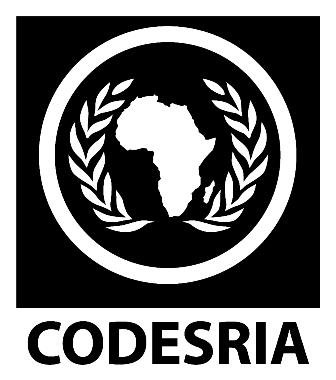ANALYSIS OF INTERNATIONAL TRADE PERFORMANCE IN SELECTED SUBSAHARAN AFRICAN COUNTRIES: IMPACT OF INSTITUTIONAL FRAMEWORK
Mots-clés :
TRADE, SUBSAHARAN AFRICAN COUNTRIES, FRAMEWORKSynopsis
Sub-Saharan Africa (SSA) with over 12.3% of the world’s population contributed as little as 1.41% of world’s total output in 2008. In terms of international trade, SSA region has performed below expectations. Its total, service and manufactured exports shares in world market on the average were at low values of 0.04%, 0.02% and 0.01% between 1995 and 2008, respectively. The values were far lower than the world average as well as what obtains in other developing regions such as Latin America and the Caribbean and Middle East and North Africa. On the other hand, SSA countries had low values on most measures of institutional quality, which were also lower than both the world average and other regions. For instance, the region’s value for
rule of law and regulatory quality in 2008 were -0.74 and -0.70 compared to the world average of -0.03 and -0.01, respectively.
The background information motivated this study with the main objective of investigating the impact of institutional framework on international trade performance of SSA countries. This objective was achieved using both descriptive and econometric analyses. The econometric analysis involved Fixed Effects model in a panel data format and Two-Stage Least Squares technique for the period 1996-2008 using 34 selected SSA countries. This approach was deemed appropriate given the fact that institutional variables had limited variation. Another reason was the imperativeness of employing some instrumental variables such as legal formation and settlers’ mortality that influence institutional variables but are orthogonal to the indicators of
international trade performance. The empirical models were formulated and estimated in the light of different categories of institutional framework and their impact on the indicators of international trade performance. The impacts of other factors such as human capital and infrastructures on international trade performance were equally assessed.
The empirical analyses were carried out by unbundling institutional framework into three main pillars – political, economic and financial institutions as well as unbundling international trade performance by focusing on export performance of five major sectors, namely: total, manufacturing, agricultural, fuel and mining, and service exports. Thus, the ‘unbundled’ institutions were related to ‘unbundled’ international trade performance.
The study found that political institutional variables had positive and significant impact on the indicators of international trade performance with different levels of impact on the indicators of international trade performance. On economic institutions, it was found that the regional economic communities in Southern Africa, notably SADC was more relevant in promoting international trade performance especially manufacturing export compared to thers. While, the indicators of financial institutions had significant impact on international trade performance especially service and manufacturing exports.
It was also established that service export was more stable than other indicators of international trade performance while fuel and mining export exhibited the greatest instability. The study equally found that real exchange rate depreciation and trade policy did not significantly promote international trade performance in SSA countries. On the other hand, it was established that human capital had positive and significant impact on the indicators of international trade.
Several recommendations were made in the study. Some of them include the need to place more emphasis on service export to mitigate the adverse effects of external shocks. Also, there is need for policy measures that will ease export-supply constraints as well as the pursuance of rule of law, which will enhance the level of contract enforcement. The strengthening of financial institutions; the improvement of the quality of human capital and regional economic communities in SSA that focus more on the provision of traderelated infrastructures in the region were equally recommended.
Téléchargements
Références
Epple, D. and Mcallum, B.T. (2006) “Simultaneous Equation Econometrics: The Missing Example Export”, Economic Inquiry, Vol. 44, No. 2, pp.374-384.
Feige E.L. (1990) “Defining and Estimating Underground and Informal Economies: The New Institutional Economics Approach”, World Development, Vol. 18, No 7, pp.989-1002.
Fongue, J. N. (2007) “Raw Materials Games and Crises in Africa: Understanding the Economic Dilemma”, in K. Wohlmuth, C. Eboue, A.
Gutowsi, A. Jerome, T. Knedli, M. Meyn, and T. Mama (eds) Africa – Commodity Dependence, Resource Curse and Export Diversification, Vol. XII, pp.141-170.
Foroutan F., (1993) “Trade Reform in Ten Sub-Saharan African Countries: Achievements and Failures,” World Bank Policy Research Paper, No. 1222.
Foroutan, F. and Pritchett, L. (1993) “Intra-Sub-Saharan African Trade: Is It Too Little?’, Journal of African Economies, Vol. 2, No.1, pp. 74–105.
Fosu, A.K. (1990) “Exports and Economic Growth: The African Case”, World Development, Vol. 18, No. 6, pp.831-835.
Fosu, A.K. (1996) “Primary Exports and Economic Growth in Developing Countries”, World Economy, Vol.19, No.4, pp. 465-475.






